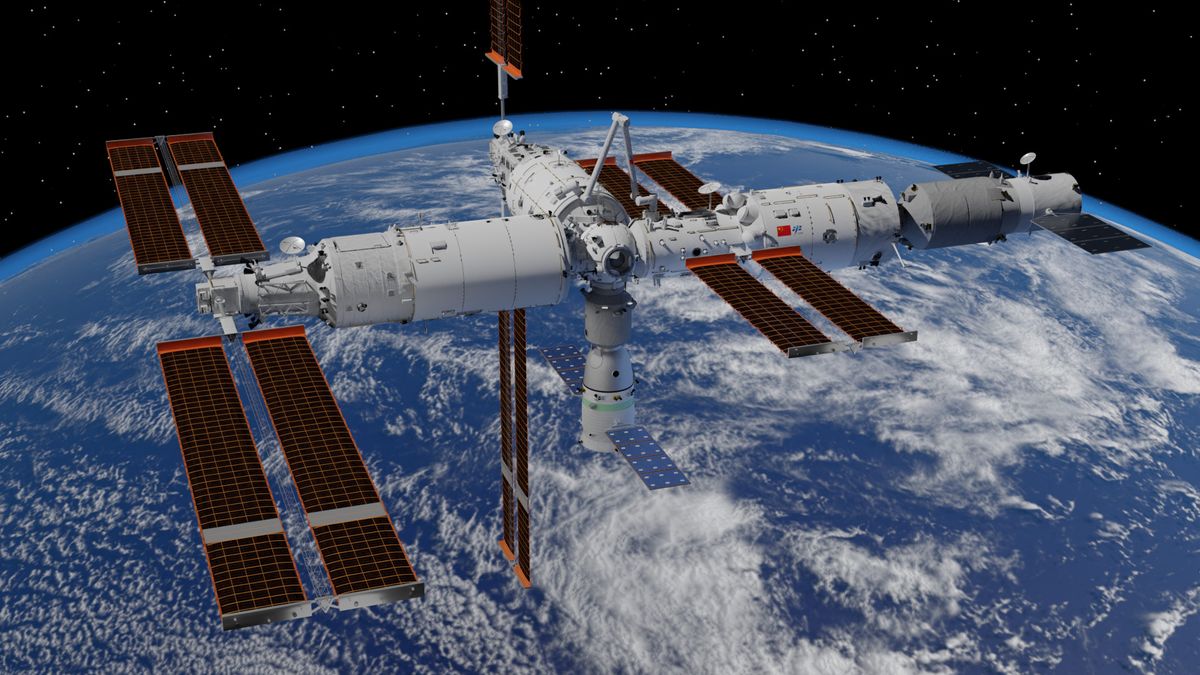China's G60 Starlink project to rival SpaceX's Starlink
China is jumping headfirst into a second megaconstellation – the G60 Starlink project – to compete with SpaceX.

A few minutes every morning is all you need.
Stay up to date on the world's Headlines and Human Stories. It's fun, it's factual, it's fluff-free.
The backstory: Starlink is Elon Musk's SpaceX project that's reshaping global internet connectivity. It plans to do this by launching 42,000 satellites into low Earth orbit. This mission began back in 2018, and it’s already sent up over 4,800 satellites through 109 missions. Just a week ago, it hit a major milestone – 2 million active customers in more than 60 countries using its space-based broadband service. But Starlink is only one of many players in town. There's also competition from OneWeb, Blue Origin's Project Kuiper and the EU's IRIS² constellation.
And China is also in the picture. In 2020, the world's second-largest economy introduced its ambitious "Guowang" megaconstellation project, also known as Project GW, as its response to SpaceX's dominance. Then in 2021, the country formed the China Satellite Network Group, a team of big players from state-owned aerospace groups. It was tasked with handling China's megaconstellation, streamlining satellite programs and fast-tracking national space projects.
More recently: In August, Chinese aerothermal expert Qu Wei gave some insight into the Guowang project. The country plans to launch around 13,000 satellites into low Earth orbit, but what's unique is that it’s going even lower in orbit than Starlink to help avoid satellite collisions and enhance space safety. These low-orbit satellites offer greater resilience, deployment flexibility and improved transmission capacity while causing less interference with terrestrial structures.
The development: Now China is jumping headfirst into a second megaconstellation – the G60 Starlink project – to compete with SpaceX. This project, backed by the Shanghai municipal government, intends to deploy over 12,000 satellites in low Earth orbit.
In August, Cheng Xiangmin, Shanghai's Songjiang district party secretary, visited a new satellite production center in western Shanghai and met with partners like Shanghai Alliance Investment and Shanghai Spacecom Satellite Technology. All of them are united in their efforts to overcome challenges and accelerate the project.
It’s part of the G60 Science and Technology Innovation Corridor, an ambitious plan proposed in 2016 to boost technological innovation and advanced manufacturing along the G60 expressway. This expressway connects Shanghai to Kunming, a city over 2,360 kilometers away.
Now, the details of China's plans to efficiently launch this multitude of satellites and whether it will have a reusable rocket like SpaceX's Falcon 9 are still unclear.
Key comments:
“Paying close attention to the construction goals and timeline of the G60 Starlink project, we have worked hard to roll out investment and help boost technology transfer in the sector,” said a representative from Shanghai Alliance Investment.
“This year, there’s a fairly good chance China will launch a couple dozen low-Earth orbit communications satellites. And next year, they might launch a couple hundred,” said Blaine Curcio, founder of Orbital Gateway Consulting, which tracks the development of China’s satellite industry, to The Washington Post in April. “In five years, if you were to tell me that China has 2,000 low-Earth orbit communications satellites in orbit, I would say that’s probably about the baseline.”
“It is no secret that working with Starlink, the US is deploying a space-based defensive, and even offensive, system,” said Qu Wei of China Academy of Aerospace Aerodynamics in an article for CPPCC Daily in July.




Comments ()